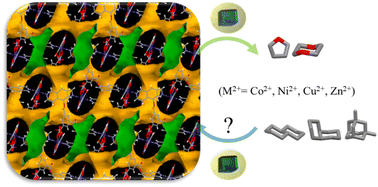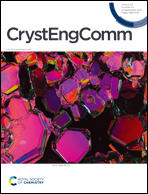Subtle metal(ii) effects of 2D coordination networks on SCSC guest exchange†
Abstract
Self-assembly of late-transition metal M(NO3)2 (M2+ = Co2+, Ni2+, Cu2+, and Zn2+) with a C3-symmetric tridentate donor, tri(isoquinolin-5-yl)benzene-1,3,5-tricarboxylate (L), produces single crystals with multi-channels consisting of 2-D networks G@[M(NO3)2L] (G = tetrahydrofuran and dioxane). The multi-channel crystals are an unusually efficient, tolerant, reproducible and practical matrix offering reversible adsorption/desorption of a wide range of guest molecules in the single-crystal-to-single-crystal (SCSC) mode without skeletal destruction at room temperature. The innovative multi-channels behave in a guest-dependent response manner, and thus should be considered to be promising molecular materials for adsorption/recognition of a wide range of guest chemicals.



 Please wait while we load your content...
Please wait while we load your content...